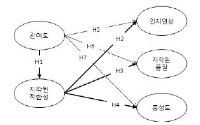PURPOSE This study presents policy implications for a Korean sports commission’s introduction and the strategies to realize it. METHODS As an important policy tool, a sports commission system attracts large-scale sports events, revitalizes local economies, and promotes the sports industry’s sustainable development. Such an introduction’s necessity and direction were explored through analysis of overseas cases and interviews with experts. First, the study examined the concept of a sports commission system, along with major overseas cases and derived policy implications to present a model suitable for Korea’s reality. RESULTS Introduction of a sports commission system requires reorganization of legal and administrative systems, strengthening the public-private cooperation model, convergence with the local tourism industry, and customized operation tailored to regional characteristics. In addition, future research directions include evaluating the system’s effectiveness after its introduction, operating customized commissions for each region, and developing sustainable models. CONCLUSIONS The results provide policy guidelines for successful introduction of the Korean sports commission system and can play an important role in establishing a foundation for development of the future sports industry and local economy. Furthermore, establishment of a comprehensive mid-to-long-term plan, including criteria for regional selection, organizational structure, and role distribution, should be prerequisite to introducing the system.
PURPOSE Through analysis, this study reports on occurrences of children and adolescents’ sports accidents and presents measures to prevent, cope with, and manage school sports accidents. METHODS The study used both quantitative and qualitative methods. First, a frequency analysis was conducted using 284,429 safety accident data of the School Safety and Insurance Association (SSIA). Second, the inductive analysis method was applied to in-depth interviews conducted with eight teachers. RESULTS , accidents are characterized as follows: 1) At the school level, accidents have increased significantly every year in a large proportion of elementary and middle schools. 2) The span of time spent on sports was large. 3) Accidents happened at playgrounds and auxiliary facilities. 4) Accidents happened during kindergarten play and ball sports in schools. 5) The descending order of days with the most accidents was Thursday, Tuesday, Friday, Wednesday, Monday, Saturday, and Sunday. 6) Rather than a certain month, accidents happened across the school semester. 7) Most accidents occurred from 10 a.m. to 2 p.m. Second, field teachers’ stories were categorized into the following topics. 1) School accidents can occur anytime, anywhere. Whether mild or serious, they still had the burden of inevitable accidents. 2) Required: were prompt response and handling by appropriate teachers; timely treatment and recovery cost support; also procedurally simplified handling by SSIA was helpful. 3) Avoiding accidents requires the following:: regular operation of safety education programs; daily promotion of teachers’ preventive observation and close guidance; and active role reinforcement of SSIA and policy support. CONCLUSIONS Finally, measures to prevent, cope with, and manage school safety accidents were proposed.

Purpose This study was designed to develop a team building program that helps freshmen student-athletes to adapt to college life and enhance team function and process and to examine the effects of this program. It could provide basic information of a team building program that effectively accelerates team function in the college team sports domain. Methods The program was developed through this process. First, an open-ended questionnaire was utilized to discover the needs of the program. Second, the results of needs of the program and important factors of team-building program were taken into consideration. Third, expert meetings were conducted. Consequently, the program consisted of three stages of total 10 sessions which was 90 min long. The questionnaires(Group Cohesion Questionnaire and Coach-Athlete Relationship Questionnaire), experience report, and program evaluation form were used as measures to identify the effects of the developed program. SPSS version 24.0 and inductive analysis were used to analyze the data. Results The results of this study are as follows. First, there was no statistically significant influence between developed program and the level of group cohesion. In contrast, the level of coach-athlete interaction was significantly increased. Second, the analysis of experience report revealed that this program reduced interpersonal conflict between team members and formed positive interpersonal relationship by mind of respect and consideration. Conclusion In conclusion, the hierarchical culture was strongly formed and team member suffered from the dual role of athlete and student in Korean college team sports. Thus, these should be resolved in order to enhance team function and process. As a results, this process could increase team performance as well as offer psychological stability to college student-athletes.

PURPOSE This study assessed Taekwondo’s impact on functional fitness and health-related quality of life (HRQoL) in older women from South Korean multicultural families. METHODS Through purposive sampling, 16 participants were divided into an experimental group that underwent a 12-week Taekwondo training program and a control group without this intervention. RESULTS Pre- and post-intervention assessments showed that the Taekwondo group experienced significant improvements in both functional fitness and HRQoL. These findings suggest that Taekwondo could be an effective physical activity for enhancing the well-being of older women in multicultural families, advocating for inclusion of culturally sensitive physical activities in health promotion programs targeting this demographic. CONCLUSIONS This study contributes to the growing body of evidence supporting physical activity’s benefits for elderly populations, particularly in multicultural family dynamics.
PURPOSE This study compared and analyzed the current status, system, and trend of evaluation and operation of member sports organizations of the Korean Sport & Olympic Committee from 2006 to 2020. METHODS A literature study was conducted for this study. RESULTS The 15-year evaluation was developed through three periods: preparation, execution, and construction. The preparation stage (2006–2009) was when the evaluation index development and operation system were established. The execution stage (2010–2016) is a critical time; when the current system was established. This was when evaluation perception was spread in the sports world and continuous changes such as evaluation system and operation, indicators. Finally, the construction stage (2017–2020) was when the evaluation system was established after integrating the Korean Sport & Olympic Committee and the National Sports Council. CONCLUSIONS It played a role in promoting balanced growth from organizational management to ethical management of sports organizations through preparation, execution, and construction. Further, the evaluation reflected the continuous development and change of the Korean sports community and one organizational assessment.
PURPOSE This study developed and tested a theoretical research model delineating the relationships between sports consumers’ team identity and their response to regional identity, sense of community, and community contributions. METHODS To achieve the purpose of this study, a total of 1,196 spectators who attended professional baseball games were surveyed. For the data analysis, confirmatory factor analysis, convergent validity, discriminate validity, and composite reliability were performed to confirm the validity and reliability of the scale through AMOS 24.0. Research model and hypothesis testing were conducted using structural equation modeling, which used data from ten different professional baseball team area contexts. RESULTS The results provide empirical evidence of the positive influence of sports consumers’ regional identity and sense of community on team identity toward community contributions in sporting event area contexts. CONCLUSIONS This study confirmed the role of regional identity and sense of community in building professional sports team identities and community contributions.
PURPOSE The purpose of this study was to investigate the effects of perceived organizational support of high school football players on innovative performance. Of particular note, we focused on examining the mediation effect of self-management between perceived organizational support and innovative performance. METHODS A total of surveys returned was 137 and the data used for the final analysis was 130. The data was processed using SPSS 21.0 statistical program and Lisrel 9.2 for confirmatory factor analysis. RESULTS The results of the analysis were as follows: first, perceived organizational support of high school football players had a positive effect on players’ self-management. Second, players’ self-management had a positive effect on players’ innovative performance. Third, players’ self-management fully mediated between perceived organizational support and players’ innovative performance. CONCLUSIONS The study concluded that maximizing both perceived organizational support and self-management of the high school football players are necessary in order for the organization to achieve high level of innovative performance.
Purpose The purpose of this study was to explore the concept of physical education redesign. Methods Studies on curriculum redesign, physical education curriculum redesign and the revised 2015 physical education curriculum were collected and analysed. Results First, three different types of curriculum redesign were discussed. Second, there was no clear concept of physical education redesign. Third, both ‘learning content area’ and ‘standard achievement’ were related to the physical education curriculum redesign. Conclusions Two different aspects of physical education curriculum redesign emerged. Establishing the clear concept of physical education curriculum redesign and presenting the concept in the next national physical education curriculum were suggested.

The cerebellum is one of the major parts of the brain involved in the motor control including motor coordination, muscle tone, balance, and the learning of motor skills. The purpose of this review paper was to explore of pathophysiology, anatomical function and neurophysiological mechanism for cerebellum. For this, we sought to examine of previous study related cerebellar disease. Specifically, this paper suggested that motor deficiency of limb movements, coordination, gait/posture balance, adaptation of during movement execution through information proprioception or kinaesthesia, and motor planning and programming of cerebellar patients. We expect that this review will be able to offer the useful information to research. For example, movement scientists will provide an academic information about cerebellar ataxia. Patients and their families will provide relevant information to the daily life (e.g., management and rehabilitation exercise).

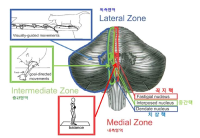
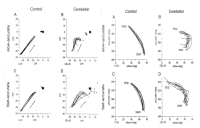
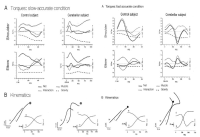


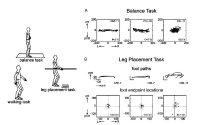
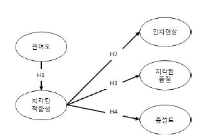
Although mega sporting events are becoming an effective means of brand communication, there has not been systematic research on involvement development and perceived fit enhancement through the sporting events. This study developed and tested a conceptual model delineating the impact of consumer involvement on perceive fit, and brand equity in mega sporting event context. Using quota sampling method, 1,847 participants (916 from IAAF; 931 from the F1) were recruited from several different cities in Korea during the mega-sporting events. Structural equation modeling were employed to examine the relationship between research constructs and test the model respectively. The study found that mega event involvement has a positive effect on perceived fit; and perceived fit influences brand equity(brand awareness, perceived quality and loyalty) toward event sponsor brands. The direct effects of involvement on sponsorship effectiveness (brand awareness, perceived quality and loyalty) did not have a significant effect on brand equity. The findings also reveal the mediating effect of perceived fit on brand equity.

